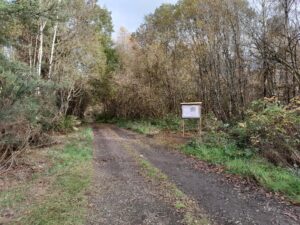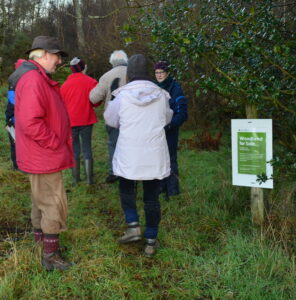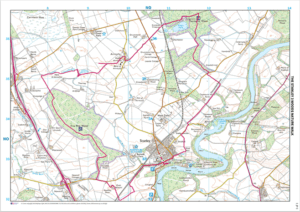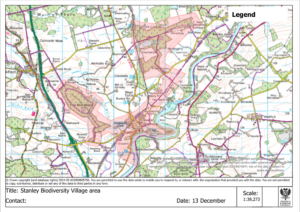Moth-world is a realm of nature I’d been aware of but had no entry into. I was always more interested in plants and birds. In one wildlife job I had, I remember a local volunteer bringing in a moth book to show us. It was the first edition of Waring, Townsend and Lewington’s ‘Field Guide to the Moths of Great Britain and Ireland’, a groundbreaking book at the time (2003). Richard Lewington’s beautiful illustrations showed moths in their natural resting positions, as you would see them while they are alive. But I remember feeling overwhelmed at the sheer numbers of moths to learn! I bought the book but didn’t find a way to see the moths.
The discovery days at Scotia Seeds and Campy introduced me to light-traps, a way to catch moths without harming them (we hope) and see them up close. Even people who said they were scared of moths were able to get close to them when the moths were safely contained in clear plastic pots. The event at Brechin also had an artistic element, inviting us to draw and colour a moth on a triangle of cloth to add to a string of bunting, for use at future events (I drew a Poplar Hawk-moth). We were all involved in releasing the moths later and the children especially enjoyed finding suitable safe places to release them. They understood very well that we had interrupted the moth’s day and that they needed to be somewhere predators wouldn’t find them.
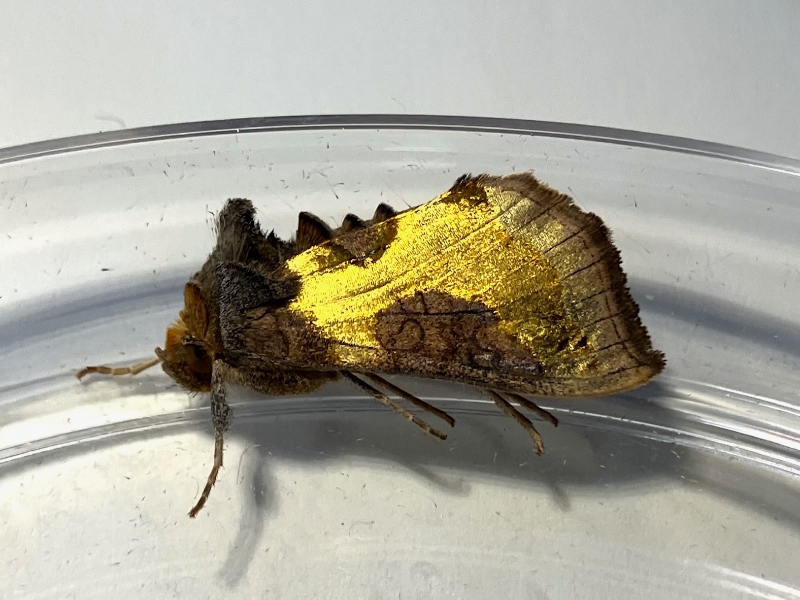
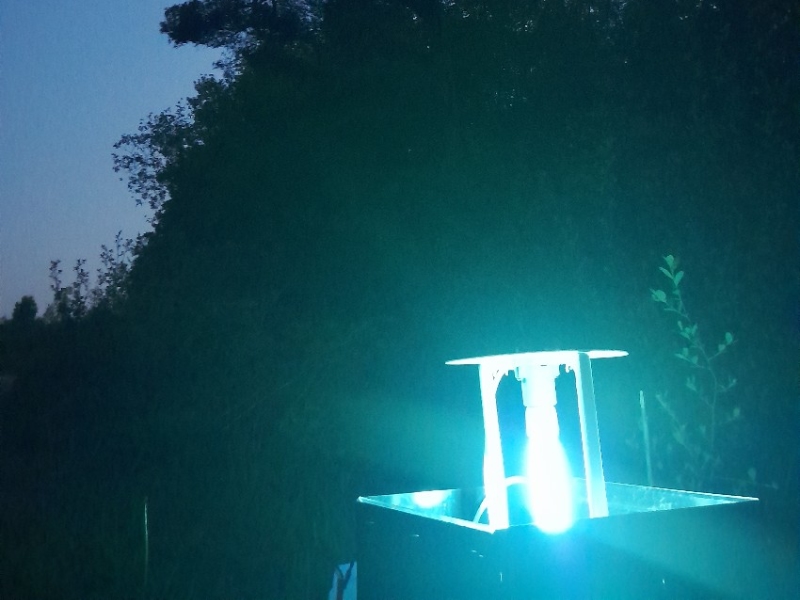
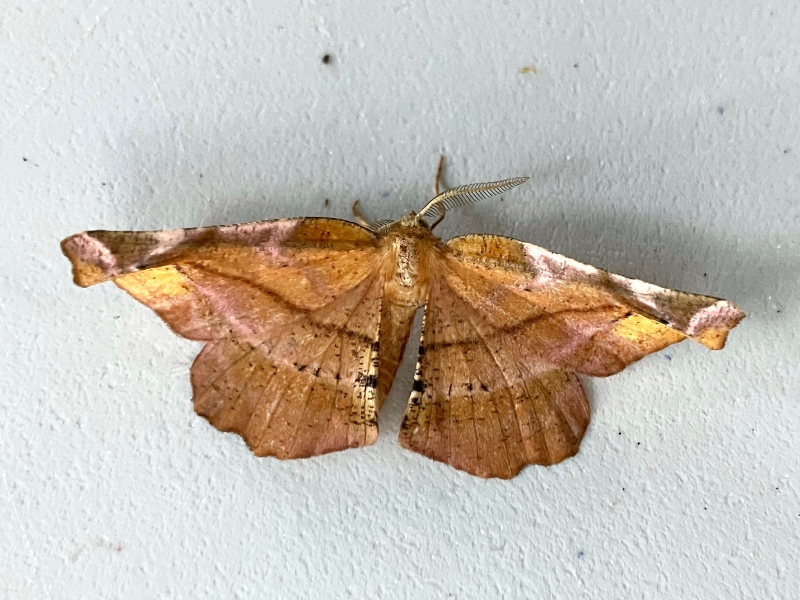
I composted these experiences for a while then decided to go for it – to design an ‘art and moths’ project and to apply for funding from Creative Scotland. It took several months to write the application and several more months for it to be approved – but I was delighted to receive funding in April last year. The first thing I did was order a moth-trap and field-guides, including the new edition of Waring, Townsend and Lewington (I’d been researching all this for months!). Then I started contacting local experts for advice. Our County Moth Recorder for East Perthshire is Cathy Caudwell. She and her husband Barry are long-term members of the Dundee Naturalists and have made great contributions to wildlife conservation over the years. I asked Cathy about submitting my moth records and she encouraged me to do this from the beginning of trapping. The data is very much needed, to monitor changes in moth populations. It turns out that moths are important indicators of change in ecosystems. They have short life-cycles, usually one or two years, and respond quickly to factors like climate change, agricultural chemicals and habitat loss.
I didn’t think I’d be competent to submit my moth information to a national database but Cathy reassured me that my records would be verified first. She asked me to photograph each species of moth and submit it with its information on iRecord. She receives these records automatically and can verify them or query them. It’s a great system, making it possible for a beginner like me to submit useful data from the start. Citizen science in action. I still use the guide books too and it usually takes me a day to photograph and identify all the moths from a trapping session at this time of year. I’m getting more confident though, recognising maybe a third of the moths straight away. It’s very satisfying when the iRecord app on my phone confirms what I thought!
To Taymount Wood – I met Elspeth at a Tayside Biological Recorders event last year and asked if anyone was trapping moths there. I’m keen to gather data from places without current records, especially active conservation projects like WSWG’s. We’ve done three Taymount trapping sessions so far this year, the last one at midsummer for the Taymount Bioblitz. We put out two traps, mine and one that belongs to Stanley Biodiversity Village. We were overwhelmed! We caught more than 200 moths of 44 different species, some of which may be first records for East Perthshire (the Drinker and the Lilac Beauty). There is no doubt that Taymount is a very biodiverse and interesting place. I’m looking forward to trapping there again soon.
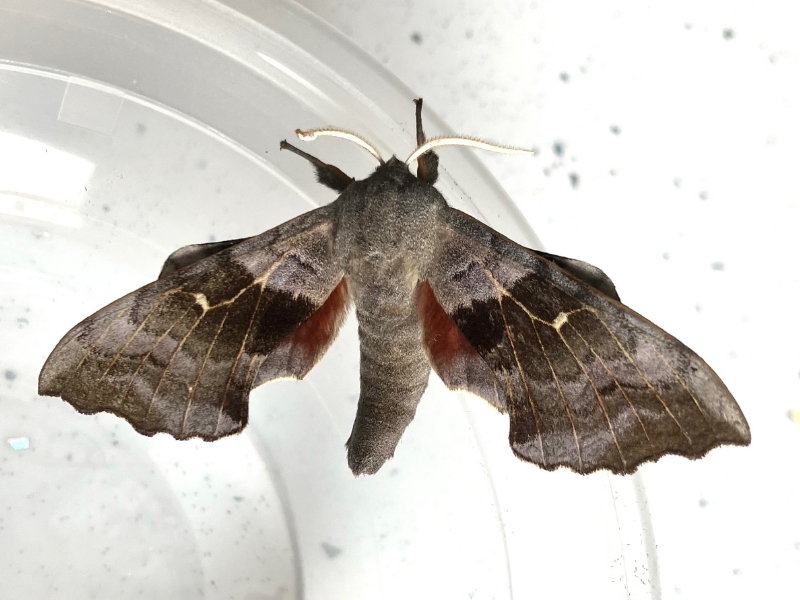
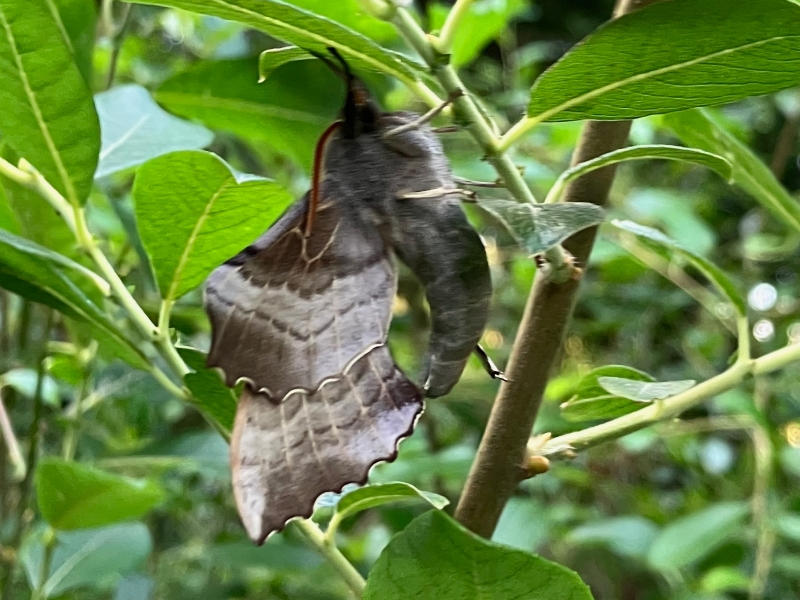
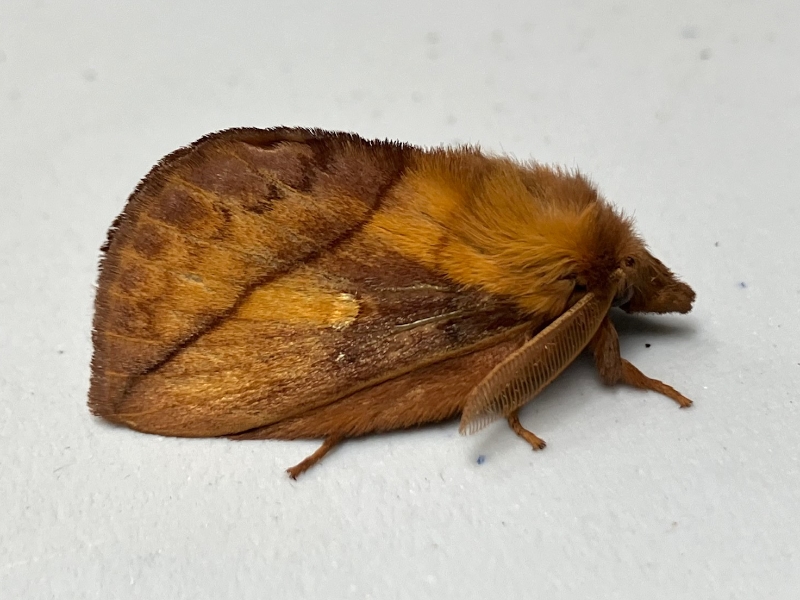
The Stanley moth-trap proved itself that night and it’s going to be out in Stanley village soon, c/o local botanical artist and WSWG member Claire Dalby. She has given us permission to set the light-trap in her garden and she is excited to see what we find. Weather permitting (as always – moths don’t come out on cold, wet or windy nights), we’ll have moths from Claire’s garden to show at our first Stanley ‘Magic Moths’ event on Saturday 9th August from 2pm to 4pm.
It’s a bookable workshop with a maximum of ten places, to be held in Stanley village hall. It is suitable for anyone age 8 and older (children under 16 must be accompanied by an adult) and will involve live Stanley moths in pots, information about moth lives, moth trapping and recording and a mothy art activity (no previous experience of any of these things is needed). The workshop is free, thanks to a mix of funding and resourcing from Creative Scotland, the Tayside Biodiversity Villages Initiative and WSWG.
Book places here by emailing Elspeth at contact@weststormontwoodlandgroup.scot
I’ll be running more workshops later this year and you can follow my moth discoveries on Instagram @janhdy and on Facebook. I’m very pleased that my artwork for the project will be shown next Spring at Birnam Arts, close to the places in Perthshire where I’ve caught my favourite moths.



